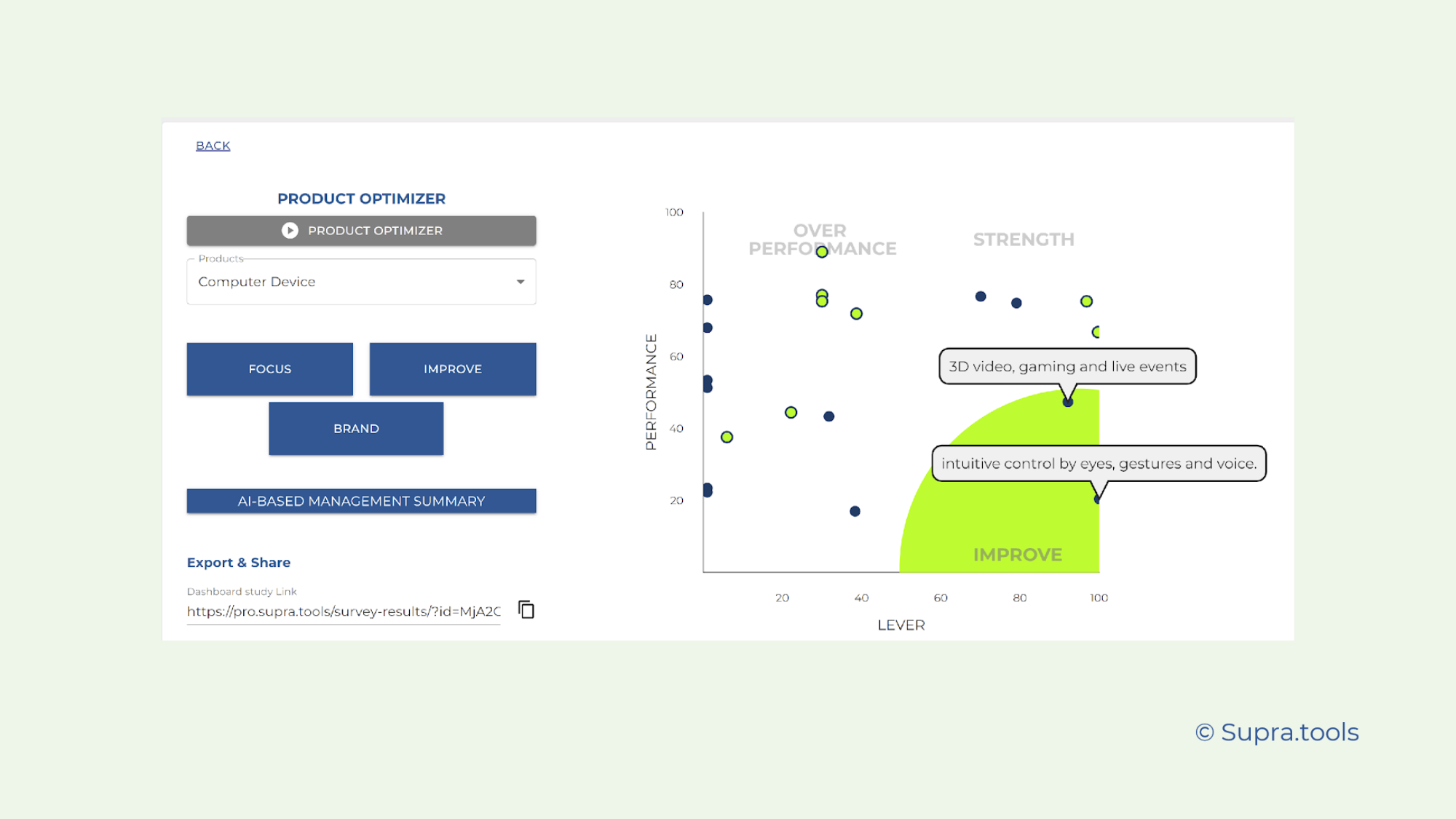
April 26, 2022
The Art of Pricing:
Why Pricing Is The Most Underestimated Consumer Goods Profit Lever - And What You Can Do About It


There is a simple reason why pricing is rarely managed perfectly by any brand: It’s not simple. It is complicated and influenced by a lot of external factors. The information needed to improve it is highly opaque.
An endless series of questions arise for the marketer when pricing a product initially and during its life cycle.
What is the customer willing to pay for this product? How do sales decrease with an increase in product pricing? What influences the pricing of the most comparable product in our product range? What pricing do competing products charge, and what influence does this pricing have? Do the features or our brand have the potential to justify premium pricing instead of economy pricing?
But the list of questions goes on. How do I get the retailer to charge what I have identified as ideal pricing on the shelf? What sale price should I aim for in the retailer negotiation? Should I bundle products and charge bundle pricing?
What impact do pricing promotions have on short- and long-term sales and willingness to pay? Should I, as a brand, therefore, support them or try to avoid them?
It is complicated. But complexity can be resolved with a lot of work. But other problems stand in the way.
In the absence of alternatives, simple rules of thumb have been established since time immemorial. The “cost-plus” thinking is the most dangerous of these.

Another heuristic is that of “listening to your gut.” Managers tend to overestimate the value of their own intuitive assessment “that’s way too expensive,” and “we’ve never charged that much before.”
Trivial surveying of consumers is subject to so many biased effects that its value is low.
The bestselling book „Pricing Intelligence“ has more on the topic and
“Divide et impera” (divide and conquer) was a basic rule of the Romans. With the same thought, brands can master the complexity of pricing. The key step is to move from “expert opinion” to evidence-based management.
In subsequent chapters and articles, I will explain all the dos and don’ts.
The path is worthwhile. Because the consequences are four central successes:
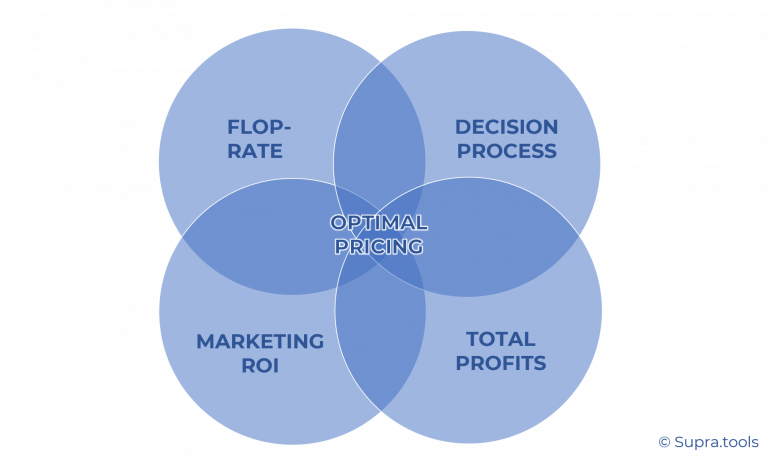
The medium-sized manufacturer of cat and dog food and cat litter had grown steadily like a good family business. With internationalization and the increasing complexity of the product range came the problems of price management.
When Jordi Queralt was hired as CMO, he started by taking stock. When it came to pricing, the results were sobering. It was based exclusively on the experiences of the product managers. There was no valid information on how good the prices set were in the market.
The company was equally blind to new product launches.
The call to data providers like IRI or Nielsson was sobering too. They offer sales figures and pricing strategies for large markets and relevant product groups. This makes it possible to deduce how customers react to pricing changes within existing price fluctuations.
But nothing was available. This is probably because medium-sized brands cannot afford to spend money on such suppliers in the 6 to 7-digit range.
Simple direct price- assessment surveys were under discussion, as well as was the use of conjoint analysis. The choice resembled a dilemma. “Can we trust the results?” was the relative question, as conjoint analysis are expensive when applying for many products.

A novel methodology that combined techniques from neuroscience and AI (Implicit Intelligence™) came to the rescue and helped Jordi measure the price-sales function of relevant products and new products on a low budget.
Result: Sales increase with rising profit margins and two successful new product launches.
Some professionals prefer to access video tutorials around pricing and insights
In many businesses, the price of their products or services is the key driver of profitability. To ensure that product pricing is set correctly, businesses need to have a good handle on price management. Unfortunately, this can often be a bottleneck for companies, as it can be challenging to get the balance right.
Three logics make the central role of pricing management clear. These three basic arguments have been discussed and debated so often in a company until pricing has relevance and professionalism.
BALANCE – The Image Of The Scales
When it comes to price management, one of the key things to keep in mind is the idea of balance. Like with a balancing scale, if one side is heavier than the other, the entire structure is thrown off. In the same way, if you have high prices and your pricing is too high or you have too low prices compared to the competition, your business will suffer.
For example, if your pricing is too high, you may find that you cannot win as many customers or clients as you’d like. On the other hand, if your pricing is too low through extremely low prices, you may struggle to make a profit.
So, which pricing is the right one? How much should one set oneself apart from the competition?
While there is no one-size-fits-all answer to this, the picture of the balance provides a clear concept. The pricing is equivalent to the customer value of the product.
To understand the optimal product pricing, it is necessary to understand which value, advantages, and benefits the product has – subjectively, situationally, in comparison.
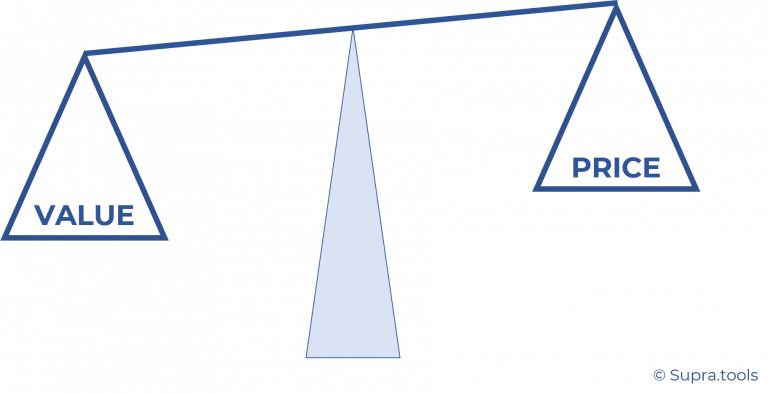
This understanding also relativizes the role of costs, which are only of downstream importance. Unit costs merely shift the optimal price point somewhat since a low-margin product needs more sales to be profitable.
Thus, to ensure that your product pricing is well-balanced, it’s important to review them regularly and adjust. This can be a difficult task, but it’s essential if you want to avoid problems down the road.
ALLOCATE – Investment Must Be Mirrored
What investments are you making in marketing and product development? All of this increases the value perceived by the consumer.
Moreover, if the product pricing counterbalances your product’s value to the customer, management should reflect this.
Your efforts to find and maintain the right product pricing should be commensurate with those creating value. A farmer who produces the best fruit should be able to harvest it professionally. Otherwise, all the effort goes to waste.
Thus, the discipline of pricing should be seen as “the harvest” of your labor. You should provide sufficient investment in your “harvesting machinery and processes”.

LEVERAGE – The Mathematical Leverage Of Price In Comparison
Leverage is a key concept in business, and it is also important in price management. This is because the product pricing or service directly impacts profitability.
Consumer goods manufacturers have a long-term average profit margin of around 10%. If, for example, it is possible to raise the pricing by 5% without demand reacting noticeably, revenue will increase by 5%.
If revenue increase at constant costs (and constant sales volume), the 5% additional sales are equal to a net profit. The profit margin rises from 10% to 15% and increases by 50% in relative terms.
Increasing profits by 50% through professional pricing is a realistic target.
Setting the optimal prices does not cause costs, only profits.
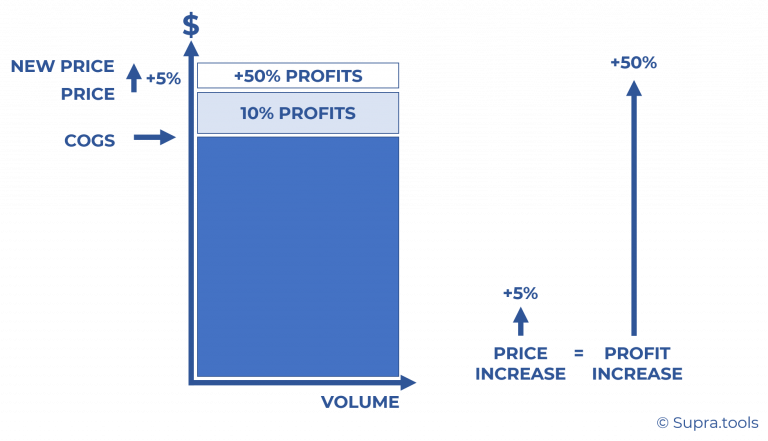
Conclusion
Professional pricing pays off in four areas: It leverages the ROI of marketing investments, it makes the decision-making process sustainable, it reduces the flotation rate of new products and it improves the overall profitability of the products.
The professionalization of pricing requires a basic philosophy based on three pillars:
Based on this, companies will build the right pricing strategies and organizations. However, the Achilles’ heel on which everything stands or falls is “pricing research” – the process of understanding what price customers are willing to pay.
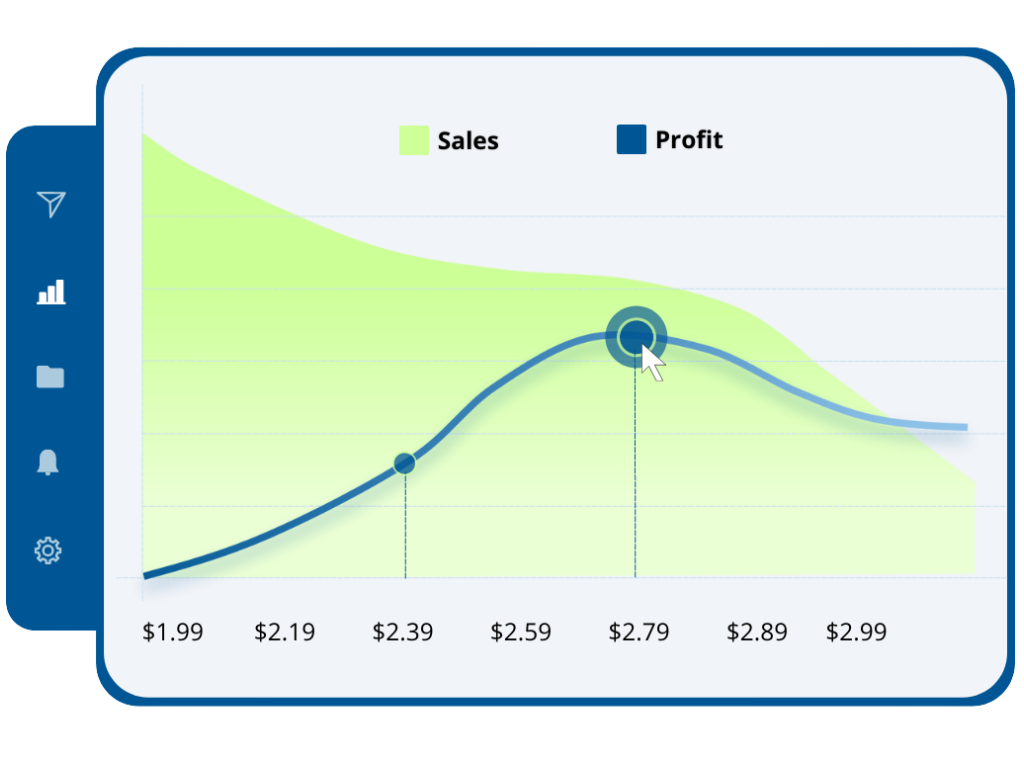
Today pioneers use the latest pricing survey tools that use Neuroscience + AI
Interested professionals can use some tools even for free and explore on its own
You can access supra tools free here.
As the business world evolves, so do companies’ strategies to remain competitive.
Definition: A modern pricing strategy is designed to address the unique challenges and opportunities that businesses face in today’s marketplace.
Companies can adopt many modern pricing strategies, but the right strategy for a particular company depends on specific factors.
Some common pricing strategies are:
Value-based Pricing Strategy
Value-based pricing is a product pricing method where businesses set their product pricing based on the perceived value of their products or services. This can be a great way to ensure that customers are willing to pay a fair price for what they’re getting.
Subscription Models
Subscription models are becoming increasingly popular. In a subscription model, customers pay a recurring fee for access to your product or service. This pricing strategy can work well if your offer is something your customers need or want to use on a regular basis. It can involve basic, standard and premium pricing strategies.
Subscription models are also successfully used in the consumer goods sector.
Product Bundling Pricing Method
Product bundling is a pricing strategy where you sell several products or services in one package. This can be a good way to increase sales and attract customers who are looking for a good deal.
It is particularly useful when combining a particular product in high demand with a product that everyone can use but does not necessarily want. For example, McDonalds bundles the BigMac with French fries, which everyone eats but not everyone would necessarily order.
Geolocation-based Pricing Strategy
Geolocation-based pricing or geographic pricing is a pricing strategy that involves charging different prices based on the customer’s location. This pricing method can be useful if you have product or services in high demand in certain locations and less demand in others.
Dynamic pricing is a pricing strategy where pricing is constantly changed based on demand. This can be done in real time or at regular intervals (e.g. daily, weekly, etc.). Dynamic pricing aims to maximise revenue by charging a higher price when demand is high and a lower price when demand is low.
Competitive pricing strategy
One of the most common pricing strategies, competitive pricing involves setting the pricing of your products based on the pricing of your competitors. Competitive pricing can help you stay price competitive and still make a profit.
Cost-plus pricing strategy
The cost-plus pricing strategy involves setting the price based on the cost of your goods or services plus a mark-up. With this strategy, you can ensure that you make a profit on your products or services.
Penetration pricing strategy
Want to sell more of your product but don’t know how? So-called penetration pricing is a strategy that can help you do just that. Penetration pricing is a type of competitive pricing where a price reduction is implemented to attract new customers and increase demand for the product.
There are many factors to consider when setting product prices, and the interplay between them can be very complex. However, two key concepts are essential to understanding pricing: the relationship between price and quality and price sensitivity. Let’s explore these in turn:
Price-Quality Relationship
The price-quality relationship is how consumers perceive a correlation between price and quality. The higher the pricing, the higher the perceived ice and each business will have its own unique approach.
This relationship can be created through marketing campaigns, product design, and even packaging. For example, a luxury car company might use high-quality materials and craftsmanship to justify higher price tags and a premium price. Similarly, a company selling budget-friendly products might use cheaper materials to keep costs down.
Price Sensitivity and Consumer Psychology
Price sensitivity is the degree to which consumers are willing to pay certain pricing for a product or service. Many factors can influence it, including perceived quality, brand loyalty, and economic conditions. Consumer psychology is a field of study exploring how people decide what to buy and how much to pay – called psychological pricing. This knowledge can be used to develop pricing strategies that are more effective at influencing customer’s perspective and customer behavior.
If consumers are highly price-sensitive, even small price changes can lead to big changes in demand. On the other hand, if they are relatively insensitive to price changes, price increases may not significantly impact sales. So, do your analysis and research properly.
Businesses should consider both the price-quality relationship and price sensitivity when setting product pricing. These concepts are essential to understanding how pricing works and how it can be used to achieve desired results.
The optimal price for products or services is the pricing that maximizes revenue for the company. To find the optimal price, companies need to consider many factors, including customer demand, production costs, and competitor prices.
Many businesses use a market pricing technique to help them set the optimal price. This involves surveying customers to find out how much they are willing to pay for products or services and then setting the product pricing at the point where demand is highest. This ensures that businesses are maximizing revenue by meeting customer demand.
Other businesses use cost-based pricing, which involves setting prices based on production costs. This approach can be useful for companies with a good understanding of their costs and can accurately predict how these will change.
If you’re not sure how to set an optimal price for your product or service, there are a few things you can do to get started:
Pricing is often thought of as a “commodity” – something companies must offer in order to remain competitive. However, pricing is one of the most powerful profit levers for any consumer goods company.
Most companies underestimate the power of pricing and leave money on the table. A recent study by McKinsey & Company found that 70 per cent of consumer goods companies are giving away significant profit potential due to poor pricing strategies.
So why is pricing so overlooked? There are several reasons why pricing is often underestimated:
However, it is often overlooked or mismanaged. To realise its full potential, consumer goods companies need to focus on four key areas:
What are the key pricing issues in pricing projects and contents of a pricing strategy?
Topic 1: Market research on what target groups are willing to pay.
Topic 2: Market research on competition
Topic 3: Market demand
Topic 4: Value of goods
Topic 5: Cost of goods / Fixed, general and variable production costs
Topic 6: Labour / Resources
Topic 7: Profit margins
How did pricing become an untapped lever of growth?
Pricing has become an untapped growth lever for a number of reasons.
First, as the global economy has become more complex and competition has increased, price has played an increasingly important role in profits and market share.
Second, advances in technology and data analytics have given companies the ability to design their pricing strategy more effectively and respond more quickly to changes in the market.
Third, the rise of e-commerce and the growth of mobile commerce have opened up new opportunities for companies to reach consumers directly with their pricing messages.
These trends have led to pricing becoming a top priority for CEOs and other senior executives. A recent survey by the Economist Intelligence Unit found that 43 per cent of CEOs consider pricing to be one of their top three strategic priorities, and another 29 per cent say it is one of their top five priorities.
How does pricing affect the bottom line?
To make a profit, a firm must sell its goods at a higher price than it paid for them. This is called the ‘price margin’ or ‘profit margin’.
The higher the price margin, the more profit a company makes per unit.
How does pricing affect consumer and business decision-making?
Pricing can have a significant impact on the decision-making of consumers and entrepreneurs. If prices are too high, consumers may not be willing to buy the product, to invest. Conversely, if prices are too low, consumers may be overcharged and businesses may not make a profit.
In my email newsletter “Pricing Insights” I cover the whole range of pricing insights solutions-from Garbor Granger to Conjoint, from NeuroPricing to Pricing Software Systems. I describe the application in various fields from new product pricing to promotion, from brand premium to feature pricing.
Keep up to date here.